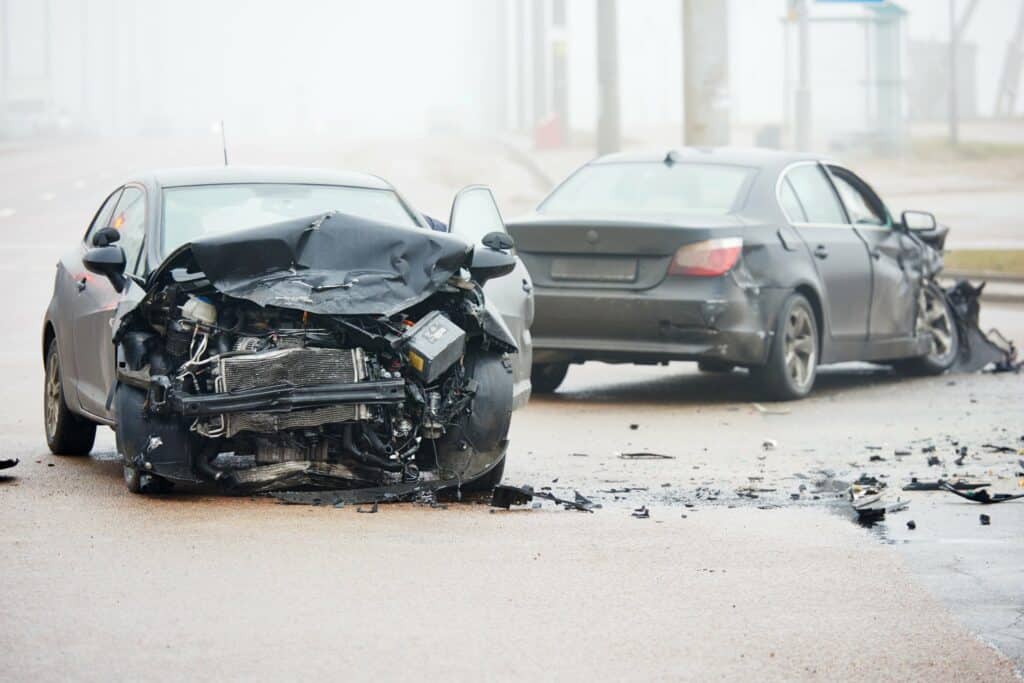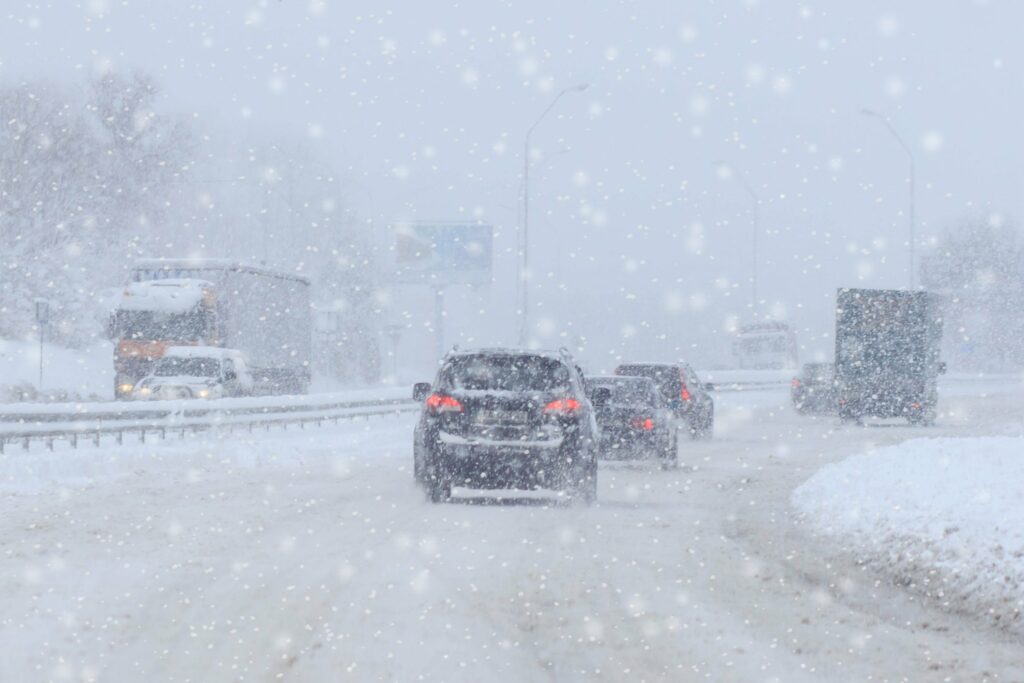Colorado Road Safety (Stats, Facts, and Tips)
In the first half of 2023, Colorado experienced an estimated 325 traffic fatalities versus 342 in the first half of 2022. Compared to 2022, Colorado has seen a 4.8% decrease in traffic fatalities.
These figures are small compared to the 19,515 estimated U.S. fatalities between January and June of 2023. However, traffic data can help us understand why crash fatalities are increasing or decreasing and what drivers can do to keep themselves and their families safe. This article will focus specifically on Colorado traffic statistics, road safety facts, and tips so you can better understand how to navigate the roads safely.
Colorado Road Safety Statistics
The following information comes from the Colorado Department of Transportation.
Number of Car Accidents
Colorado saw 119,000 automobile crashes or more for 5 straight years from 2015 to 2019 before a steep decrease in 2020. Since 2020, those numbers have slowly begun to climb. Here is the number of crashes by year over the past five years:
- 2019: 121,402
- 2020: 86,813
- 2021: 97,718
- 2022: 95,250
- 2023: 98,249
Serious Injury Accidents
After more than 3,007 crashes with suspected severe injuries in 2021, Colorado saw a similar figure of 3,016 in 2022. However, the number of serious vehicle injuries in Colorado has risen since 2022 to 3,268 for 2023. Below is the number of severe injury crashes for each month in 2023:
- January: 195
- February: 199
- March: 241
- April: 244
- May: 333
- June: 315
- July: 380
- August: 341
- September: 323
- October: 283
- November: 235
- December: 179
Fatal Crashes

The 2020-2023 Strategic Transportation Safety Plan includes a performance target of reducing traffic fatalities in Colorado by 15% from 2020 to 2023. There were 496 fatal crashes in 2020, 638 in 2021, 699 in 2022, and 585 in 2023.
- 585 fatal crashes have occurred in 2023, resulting in 632 fatalities.
- 46 non-motorist fatalities have occurred.
- Denver County has seen the most severe crashes in Colorado this year, with 575 suspected serious injury accidents and 66 fatal accidents.
Below is the number of fatal crashes for each month in 2023:
- January: 47
- February: 48
- March: 38
- April: 63
- May: 54
- June: 64
- July: 85
- August: 57
- September: 67
- October: 54
- November: 30
- December: 25
Colorado Road Safety Facts and Tips
Knowing how to drive in certain conditions can help you protect yourself and your family. Though we specifically focused on data gathered in Colorado, you can apply many of the following tips to driving in any state.
Seat Belt Usage
A 2023 seat belt usage study in Colorado showed the percentage of seat belt usage among five vehicle categories: vans, trucks, cars, SUVs, and commercial vehicles.
- Vans: 90.0%
- Trucks: 82.9%
- Cars: 88.8%
- SUVs: 91.4%
- Commercial vehicles: 83.5%
Statewide results show that seat belt usage increased for all vehicle categories in 2023. An increased focus on seat belt safety led to an overall 6.2% increase in seat belt usage since 2014.
What role do seat belts play in protecting drivers and passengers? According to the National Highway Traffic Safety Administration, the national seat belt use rate was at 91.9% in 2023. It also reports that seat belts saved an estimated 14,955 lives nationwide and could have saved an additional 2,549 people if they had buckled up in 2017 alone.
Using a seat belt can reduce your risk of:
- Fatal injury by 45% in the front seat of a passenger car and 60% in the front seat of a light truck
- Moderate to critical injuries by 50% in the front seat of a passenger car and 65% in the front seat of a light truck
Airbags are not enough to protect you in an accident. Without a seat belt, airbags could even seriously injure or kill you. Using a seat belt is the single most effective thing you can do to protect yourself in a crash.
Mountain Driving
Colorado has some of the most beautiful scenic mountain drives in the country. While mountain driving can be a serene experience, keep a few safety tips in mind.
Be Mindful of Braking
Riding your brakes down a steep decline can cause them to overheat. Instead, use first gear when driving downhill as a primary source for braking. Engine braking saves you from relying on your brake pedal, which helps your brake pads last longer and keeps your wheels turning. Turning wheels means you can steer, which is critical when undertaking a steep downhill.
Keep Your Vehicle Maintained
Steep inclines and declines can be especially rough on your vehicle, so scheduling a maintenance check-up before a big mountain trip is wise. Pay special attention to the brakes, engine, battery, oil, windshield wipers, heater, and tire condition. You may need to take your car to a mechanic for a thorough check, or if you feel confident in your ability to evaluate vehicles, you can examine it yourself. Also, be sure to fill up with gas, as driving up steep inclines uses more fuel than driving straight or downhill.
Follow Safe Mountain Driving Etiquette
Mountain driving requires drivers to drive carefully, especially in adverse weather conditions. Avoid hugging the centerline when driving on winding roads, and take blind corners slowly while honking your horn to alert drivers coming from the other direction. On narrow single-lane roads, the driver going downhill should yield to the driver moving uphill by slowly reversing and finding a space to pull off the road.
Winter Driving

Even experienced drivers must prepare for driving in Colorado winter weather. To ensure safe driving during the winter months, do the following:
- Clear your car of snow and ice before driving.
- Be careful when accelerating, braking, or turning. Those are the three actions you do most while driving, and you should only do them one at a time while driving in adverse weather conditions.
- Keep momentum while traveling uphill to avoid getting stuck.
- Follow Colorado’s Left Lane Law. No matter the time of year, keep right except to pass.
- Look ahead for traffic signs and plan for abrupt turns or stops.
- Keep your headlights low during the night. High beams can decrease visibility if there is snow.
- While traveling downhill, switch to a lower gear and gently tap your brakes to keep traction.
Click here to see Colorado’s vehicle traction and chain laws.
Shop Traffic Safety Equipment at Interwest Safety Supply
At Interwest Safety, we understand the importance of traffic safety no matter where you drive. We are a certified 3M sign fabricator and have provided high-quality traffic safety signs and equipment to the government and highway construction industry for over 40 years. Visit our website to view our extensive product line and contact our experienced staff today.







